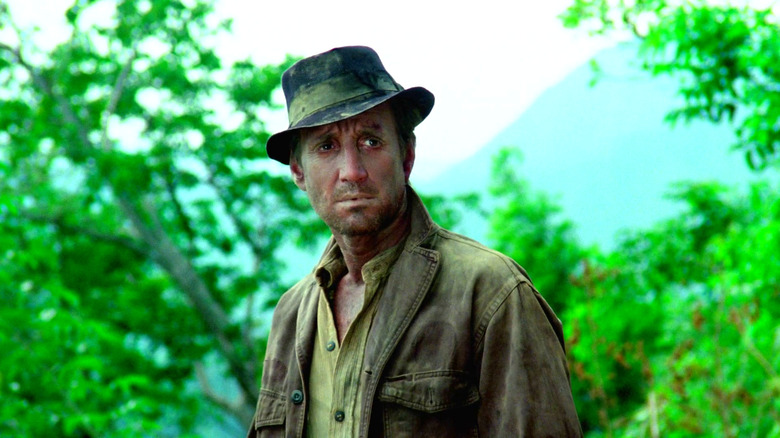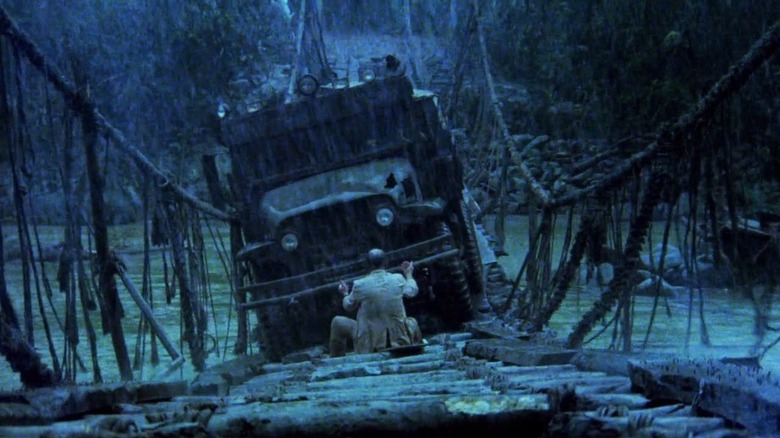Quentin Tarantino Called This '70s Thriller One Of The Greatest Movies Ever Made (And He's Right)
Quentin Tarantino is more than one of Hollywood's greatest directors. He's also an avid movie buff who is always eager to share his love of his favorite films, past and present. From his open adoration of the FX series "Justified" — which prompted him to cast star Timothy Olyphant in "Once Upon a Time in Hollywood" — to his obsession with blaxploitation films and spaghetti Westerns, he's never been shy about the movies that inspired him. One of Tarantino's favorites is "Sorcerer," a '70s flop that turned into a big hit. He called it one of the greatest movies of all time.
"Sorcerer" is a 1977 thriller directed by William Friedkin (who died in 2023). Friedkin was relatively fresh off of making "The Exorcist" a few years earlier. Unlike that horrifying family drama, "Sorcerer" centers on a group of four criminal outcasts in South America who come together for a job transporting a dangerous load of dynamite. The whole cargo is unstable, and it could blow at any time.
Though it wasn't a hit at the time of its release (and was initially panned by critics), retrospectives have since agreed that Friedkin's "Sorceror" is nothing less than a masterpiece; one that left a lasting influence on modern cinema. Gripping action, nail-biting tension, and expert direction made it a filmmaker fave, from Tarantino and Francis Ford Coppola, to Christopher Nolan. All of them have taken influence from Friedkin's thriller.
One iconic sequence in Sorceror stuck with Tarantino
The most intense scene in "Sorcerer" involves the characters carefully driving the two dynamite-laden trucks across a rickety wooden bridge. Here, a bridge is as terrifying as the first time we ever saw Darth Vader, threatening to collapse over a raging river. It's a scene that has always stuck with Quentin Tarantino. "The bridge scene is just one of the great suspense moments in cinema," Tarantino said in the documentary "Friedkin Uncut."
Perhaps surprisingly, the precarious moment wasn't captured through the use of effects like miniatures, stop-motion, or rear projection photography. Instead, it was fully practical — one of many unbelievable movie stunts that were totally real — with two real trucks (and thankfully fake dynamite) slowly moving across a swinging wooden bridge. "If you wanted to show something extraordinary, you had to do something extraordinary, and photograph it," said Francis Ford Coppola, who was also interviewed for the Friedkin documentary.
According to Friedkin, the scene was achieved shot-by-shot. A hydraulic system was rigged up beneath the bridge, and the truck was attached to the bridge from below, out of the camera's view. That didn't mean it was any less dangerous. "Many times, both trucks fell into the water." In fact, Friedkin admits that, on at least one occasion, he himself went over the side while in one of the trucks.
With this level of dedication to practical photography for such a massive sequence, it is no wonder that Friedkin's film has proved an influence on filmmakers like Tarantino and Christopher Nolan — both of whom are known to minimize the use of special effects in favor of a dangerous but intense reality.

